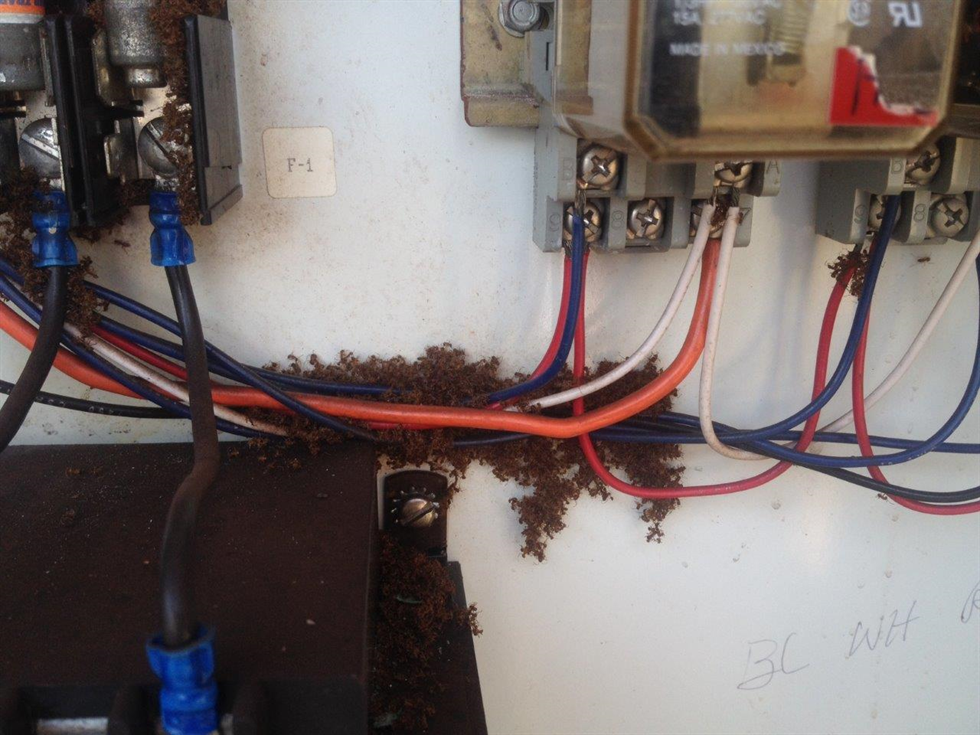If you build it, they will come
If you take a moment to admire the blooming trees and at JSC, a peaceful feeling of contentment likely arises. However, underneath your feet, a gruesome battle has been waged in the arthropod community. After years of fighting, there is only one victor: the crazy ant.
_female_worker.jpg)
Tawny crazy ant (Nylanderia fulva) female worker. Image Credit: Michael Bentley
Discovered in Houston in 2002, crazy ants originated from northern Argentina and southern Brazil. They have found a new home in southeastern Texas’ hot and humid climate. Named for their erratic, fast movements, crazy ants are difficult to control because they can survive inside and outside, hunt far from their nests and have multiple queens giving birth to new ants. They are also bad news for other arthropods, like spiders and centipedes, because crazy ants can dominate local ecosystems. This, in turn, affects the availability of food for birds and other animals living in the area.
Fire ants are another South American ant species that calls JSC home. But, if you stumble upon a colony of crazy ants, you won’t find any fire ants in sight. Crazy ants use a chemical spray to attack their enemies, including fire ants. They also create a protective covering that neutralizes fire ant venom. These traits have allowed crazy ant populations around Houston to increasingly grow unchecked by its competitors. (Don’t worry; crazy ant poison does not have any effect on humans.)
Crazy ants swarm openings in buildings in search of heat and water. This is a problem at JSC because, once inside, the ants amass around electrical cables and circuits. The large numbers of crazy ants can cause circuits to short out. It is speculated that as the ants are electrically shocked from the circuits, they release alarm pheromones that attract more ants.
Another problem arises, as crazy ants are omnivores and eat other dead crazy ants. When the ants climb into electrical circuitry, the living ants will eat the dead ones, creating a massive pile of ants. While the wiring has not been damaged by the ants at JSC, crazy ants are known to cause even more damage by chewing through cable insulation.

Crazy ants swarm a building's electrical circuitry. Image Credit: Yong-il Yi
Sites at JSC specifically attacked by crazy ants include Buildings 12, 26, 27, 30, 37, 48, the Sonny Carter Training Facility and multiple substations. To prevent ants from getting in, the entire outside of the building must be sealed. A subcontractor traditionally took care of the crazy ant problem each year, with additional cost to the government. However, in 2016, Senior Project Manager Yong-il Yi decided that a team of JSC team members would fight the crazy ant problem.
Yi originally contacted Matt Strausser, JSC’s wildlife biologist, to collaborate on how to handle the ants. They discovered two products to defeat them: Termidor and Invictus blitz. Termidor is a spray used around the perimeter of a building, and Invictus blitz is granular protein-based lethal crazy ant bait.
In the fall, Yi brought together Strausser, the grounds maintenance team and custodial team to address the crazy ants before they tried to move into buildings for the winter. Strausser tracked and mapped the crazy ants across JSC to see where they might attack. The grounds team applied the Invictus, and the custodial team sealed the perimeter of JSC buildings. Due to their teamwork, the crazy ants were controlled for the first time last fall, and 90 percent of the money usually spent on crazy ant mitigation was saved in the process.
Yi’s Center Operations Directorate collaboration is gearing up for their next battle with the crazy ants this spring, as between March and April, newborn crazy ants will try to intrude JSC buildings again—try being the operative word. Failure will be their only option. This is just one example of the behind-the-scenes action that keeps the center running effectively, and not running away from the crazy ant intrusion.
Eric Smith
NASA Johnson Space Center







